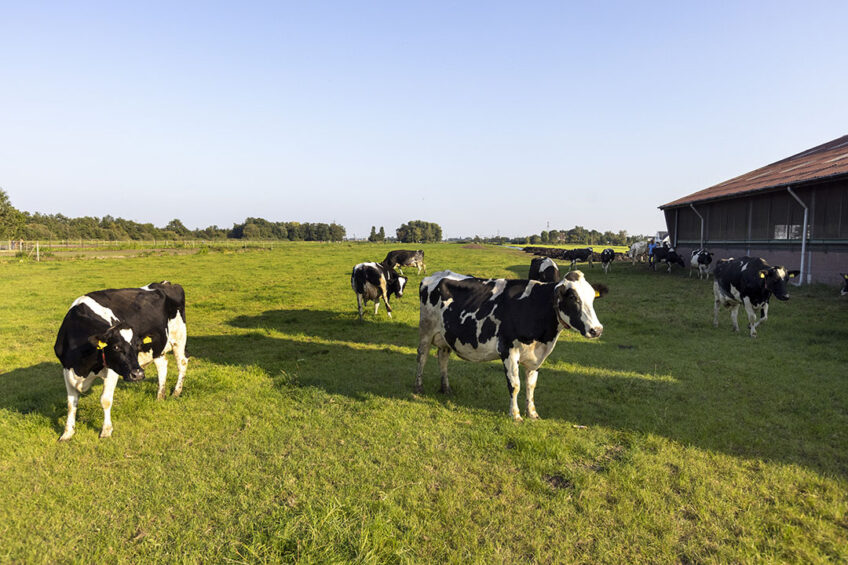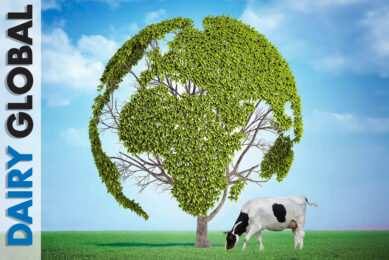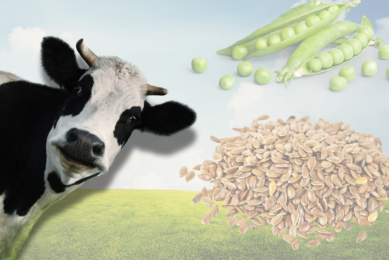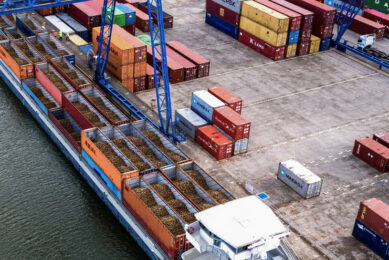8 options for dairy farmers to reduce emissions

Dairy farmers can reduce their carbon footprint and overall emission through a combination of nutrition and management-based strategies, according to the Net Zero and Livestock report.
Mitigation goals can be met through manipulation of dietary composition to increase milk production and feed utilisation efficiency to inhibit CH4 emissions. Nutrition-based strategies can also include grassland management, mainly by offsetting the need for concentrates, while most of the management-based strategies work by means of animal, slurry and fertiliser management.
In its latest report, the UK’s Centre for Innovation Excellence in Livestock said genetic improvement in traits linked to productivity, health, feed efficiency and future methane production will also be a positive step to improving the national herd’s emissions.
The report highlighted 8 options for milk producers to consider:
- Complete a regular, annual carbon audit using a reliable carbon calculator to establish a baseline and identify hotspots on the farm.
- Maintaining a high level of production efficiency is essential through high health status for the herd, reducing age at first calving, optimising calving internal, replacement rate, cow longevity and optimising feed inputs to match animal feed.
- Improve both quality and utilisation of forage as this is a major component of cow diets.
- Reduce the need for artificial fertiliser while maintaining or enhancing sward productivity by including legumes in pasture mix and promoting soil health and fertility.
- Increase starch and concentrate proportions in the diet within recommended guidance levels to reduce methane production per unit of feed intake.
- Novel feed additives can reduce methane production in the rumen but many are not yet available or proven on UK dairy farms.
- Genetic improvement can help reduce emissions if focused on component traits such as productivity related to cow size, feed efficiency, fertility, longevity or health. This should be part of farm decision-making now to help deliver long-term emission reductions.
- How slurry or manure is stored and utilised can reduce emissions – a) additive can reduce emissions from stored manure; b) low emission spreading reduces methane and nitrous oxide emissions while improving Nitrogen usage efficiency and reducing the need for artificial fertiliser and c) precision application of manure and fertiliser can better match soil nutrient status with plant nutrient uptake. Soil testing for key nutrients is important.
CIEL study
One study to come out of CIEL recently considers the development of a new approach to feeding ruminants of a new palm-free fat supplement, which has been developed by UK nutrition and supplement company UFAC-UK.
Using the research capabilities of the University of Nottingham’s Centre for Dairy Research Innovation, the project compared the palm-free supplement, manufactured from locally-sourced vegetable oils, together with marine oils, against a palm oil supplement.
Initial results point at a potential financial benefit to the entire UK dairy herd in excess of £85 million (€101 million), based on current prices for the products under trial and liquid milk. They also revealed that cows were more efficient when fed on the new feed supplement, increasing milk yields and protein concentrates, with no differences in dry matter intake.
Significantly, the feed carbon footprint of the new fat supplement, named Enviro-lac, was approximately one third of the footprint of the control palm-based supplement, reducing the feed carbon footprint per kg of milk by 11%.
Professor Phil Garnsworthy, Professor of Dairy Science at the University of Nottingham, said: “Targeted and precision feeding of the new palm-free fat supplement offers producers significant financial gains through improved quantity and quality of milk produced and reduced concentrate feeding.”
Garnsworthy, who earlier this month received the prestigious Sir John Hammon award for his contribution to the field of animal science from the British Society of Animal Science (BSAS), added: “Substitution of calcium soap with the new supplement would contribute positively towards mitigating climate change by helping reduce deforestation for the planting of palm plantations.”
The CIEL report can be found here.
Join 13,000+ subscribers
Subscribe to our newsletter to stay updated about all the need-to-know content in the dairy sector, two times a week.










